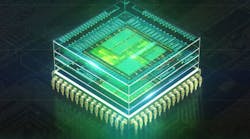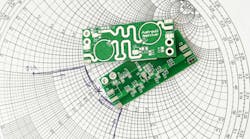A single pulse of ultrasound fired into the polymer encapsulant of a TO-247 device travels through the polymer at a speed around 3,000 m/s. Its mission is to characterize any internal material interfaces that it encounters. It will be partly reflected by any material interface, but most strongly—virtually 100%—by the interface between a solid and an air gap, and less strongly by solid-to-solid interfaces.
When a pulse encounters a solid-to-solid interface, a portion of the pulse crosses the interface and travels deeper, where it may be reflected by a second interface. A solid-to-air interface reflects virtually 100% of the pulse, and no ultrasound crosses the interface.
The reflected ultrasound returns at its original speed to the receiver housed with the transducer that launched the pulse. Its round-trip time will be measured in nanoseconds. The returning echo can carry information about the depth of the interface, the acoustic impedance (density times acoustic velocity) of each of the two materials at the interface, and the change—positive or negative—in acoustic impedance in crossing the interface.









